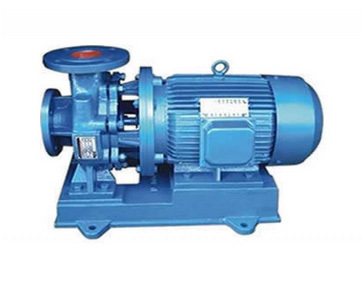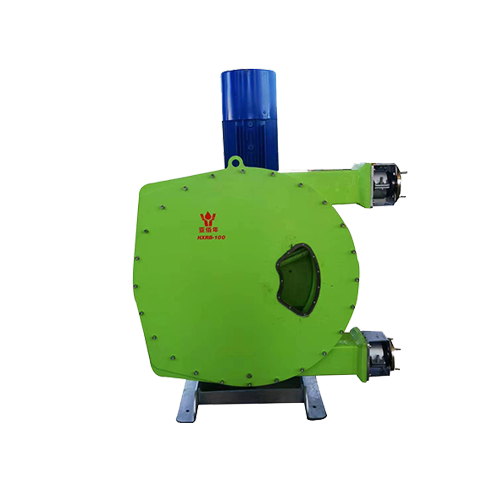Maximize Performance with the Right ISG Pipeline Pump: The Ultimate Guide
Apr 01,2025

Maximize Performance with the Right ISG Pipeline Pump
Table of Contents
- 1. Introduction: Understanding ISG Pipeline Pumps
- 2. Benefits of Using ISG Pipeline Pumps in Industrial Applications
- 3. Key Selection Criteria for ISG Pipeline Pumps
- 3.1 Determining Flow Rate Requirements
- 3.2 Understanding Total Dynamic Head (TDH)
- 3.3 Material Compatibility
- 4. Proper Installation Techniques for ISG Pipeline Pumps
- 5. Essential Maintenance Tips for Longevity
- 6. Troubleshooting Common Issues with ISG Pipeline Pumps
- 7. Case Studies: Successful Implementation of ISG Pipeline Pumps
- 8. Frequently Asked Questions
- 9. Conclusion
1. Introduction: Understanding ISG Pipeline Pumps
ISG pipeline pumps are robust, centrifugal pumps specifically designed for transporting various liquids in industrial settings. Their versatility and efficiency make them an excellent choice for a range of applications, from water supply systems to chemical processing. **To maximize performance**, it is essential to choose the right ISG pipeline pump tailored to your specific needs.
2. Benefits of Using ISG Pipeline Pumps in Industrial Applications
The ISG pipeline pump offers numerous advantages that contribute to operational efficiency and cost-effectiveness:
2.1 High Efficiency
These pumps are designed with advanced hydraulic principles, ensuring they operate at high efficiency. This results in reduced energy consumption, leading to lower operational costs.
2.2 Low Maintenance Requirements
ISG pipeline pumps are engineered for durability and reliability, minimizing the need for frequent maintenance. Their simple design allows for easy access to components, making repairs and servicing straightforward.
2.3 Versatile Applications
From municipal water systems to industrial processes, ISG pipeline pumps can handle various liquids, including clean water, chemicals, and even slurries. This versatility makes them invaluable in many sectors.
3. Key Selection Criteria for ISG Pipeline Pumps
Selecting the right ISG pipeline pump involves careful consideration of several factors to **maximize performance and efficiency**.
3.1 Determining Flow Rate Requirements
Understanding the required flow rate is crucial. Flow rate refers to the volume of liquid that needs to be moved over a specific period. Calculate your operational needs to ensure the chosen pump can deliver the required flow efficiently.
3.2 Understanding Total Dynamic Head (TDH)
Total Dynamic Head (TDH) is the total energy that the pump must impart to the liquid to transport it from the source to the discharge point. Consider factors such as elevation changes, friction losses, and any fittings or valves in the pipeline when calculating TDH.
3.3 Material Compatibility
The materials used to construct the ISG pipeline pump should be compatible with the liquids being pumped. Whether you are dealing with corrosive chemicals or abrasive slurries, selecting materials that withstand the specific characteristics of the liquid is vital for longevity and performance.
4. Proper Installation Techniques for ISG Pipeline Pumps
Installing an ISG pipeline pump correctly is essential for maximizing its efficiency and lifespan. Follow these guidelines to ensure proper installation:
4.1 Site Preparation
Before installation, ensure the site is adequately prepared. This includes a leveled surface, adequate space for maintenance, and proper alignment with the piping system.
4.2 Correct Mounting
Mount the pump using appropriate anchors and supports to prevent vibrations that can lead to wear and tear. Ensure the pump is level and aligned with the pipeline to avoid undue stress on the components.
4.3 Piping Considerations
Use the appropriate piping materials and sizes. Ensure that all connections are secure and leak-free to prevent energy loss and maintain system efficiency.
5. Essential Maintenance Tips for Longevity
Regular maintenance is critical to extending the life of your ISG pipeline pump and ensuring it operates at peak performance. Implement the following maintenance practices:
5.1 Regular Inspections
Conduct routine inspections to check for leaks, vibrations, and unusual sounds. Identifying potential issues early can prevent costly repairs.
5.2 Lubrication
Ensure that all moving parts are adequately lubricated according to the manufacturer's specifications. Proper lubrication reduces friction and wear, extending the pump's lifespan.
5.3 Component Replacement
Be proactive about replacing worn or damaged components. This includes seals, bearings, and impellers, which can significantly impact pump performance if not addressed in a timely manner.
6. Troubleshooting Common Issues with ISG Pipeline Pumps
Even with proper maintenance, issues may arise with your ISG pipeline pump. Here are common problems and their solutions:
6.1 Low Flow Rate
If the pump is not delivering the expected flow rate, check for blockages in the pipeline, ensure proper alignment, and verify that the pump is adequately sized for the application.
6.2 Excessive Vibration
Vibration can indicate misalignment, imbalance, or damaged bearings. Ensure the pump is correctly aligned and check for debris that may be affecting its operation.
6.3 Overheating
Overheating can result from insufficient lubrication or excessive friction. Regularly check oil levels and ensure proper ventilation around the pump.
7. Case Studies: Successful Implementation of ISG Pipeline Pumps
Real-world examples illustrate the effectiveness of ISG pipeline pumps in various applications:
7.1 Water Treatment Facility
At a municipal water treatment facility, the installation of ISG pipeline pumps resulted in a **30% increase in efficiency**. By replacing outdated pumps with ISG models, the facility reduced energy costs while improving water quality through reliable flow rates.
7.2 Chemical Processing Plant
A chemical processing plant faced challenges with corrosive fluids impacting pump performance. By switching to ISG pipeline pumps constructed with high-grade materials, the plant significantly reduced maintenance costs and downtime.
8. Frequently Asked Questions
8.1 What is the lifespan of an ISG pipeline pump?
The lifespan of an ISG pipeline pump can vary based on usage and maintenance but generally ranges from 10 to 20 years with proper care.
8.2 How do I choose the right size pump for my application?
Selecting the right size involves calculating your required flow rate and TDH. Consulting with a pump expert can also guide you in making the best selection.
8.3 Can ISG pipeline pumps handle abrasive materials?
Yes, ISG pipeline pumps can handle abrasive materials if constructed with suitable materials designed for wear resistance.
8.4 What are the energy savings associated with ISG pipeline pumps?
ISG pipeline pumps are designed for high efficiency, leading to significant energy savings, often reducing operational costs by up to 30%.
8.5 How can I improve the efficiency of my existing pipeline pump?
Regular maintenance, ensuring proper alignment, and upgrading to a more efficient pump model are excellent strategies for improving efficiency.
9. Conclusion
Maximizing performance with the right ISG pipeline pump is crucial for industrial operations. By understanding the benefits, selection criteria, installation techniques, and maintenance practices, you can ensure your ISG pipeline pump operates efficiently and effectively. Investing in quality equipment and adhering to best practices will not only enhance your operational productivity but also contribute to long-term savings and reliability.
Contact Us
E-mail :
sales@yaquanpump.com
service@yaquanpump.com
Phone/WhatsApp:
+44 7301702546
+63 9452052801
Address:
Room B208, Building 2, North Hongqiao Songri Center, No.215 Gaochao Road, Jiading District, Shanghai









